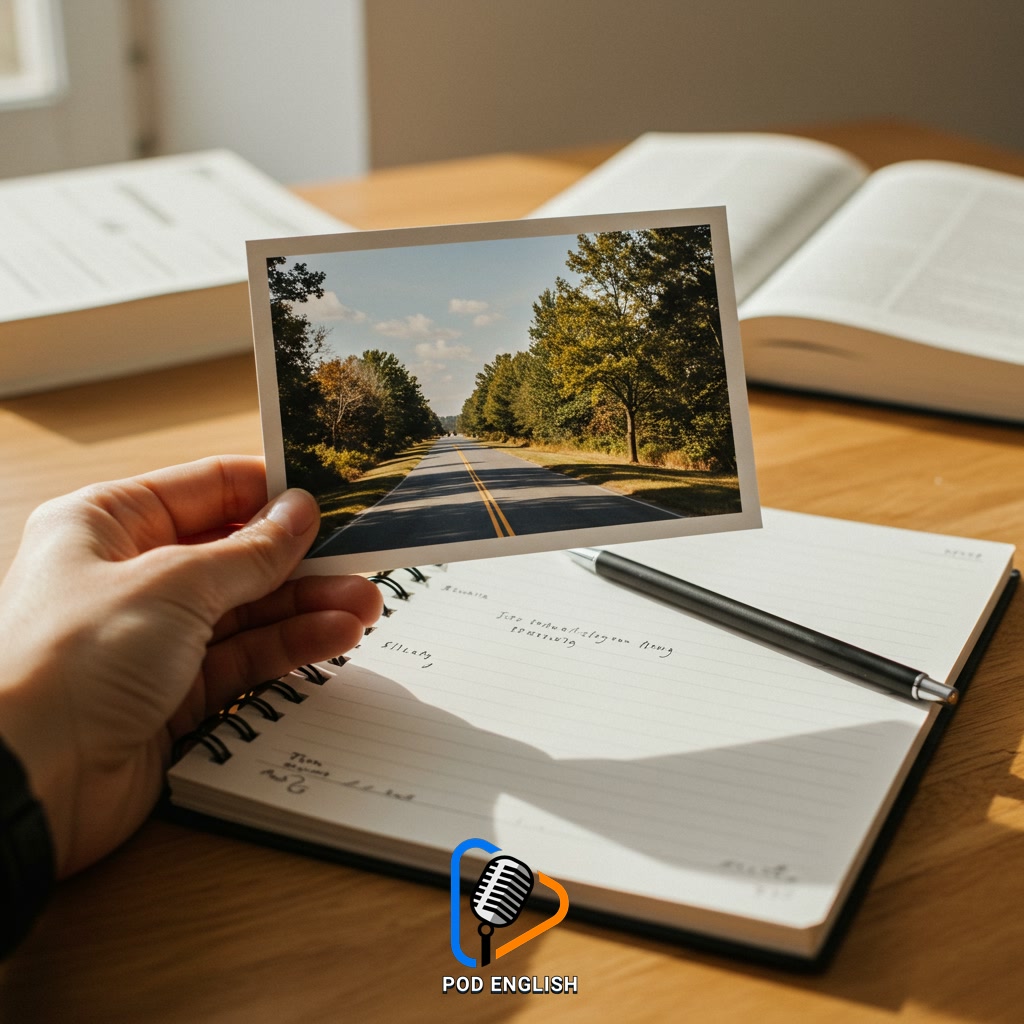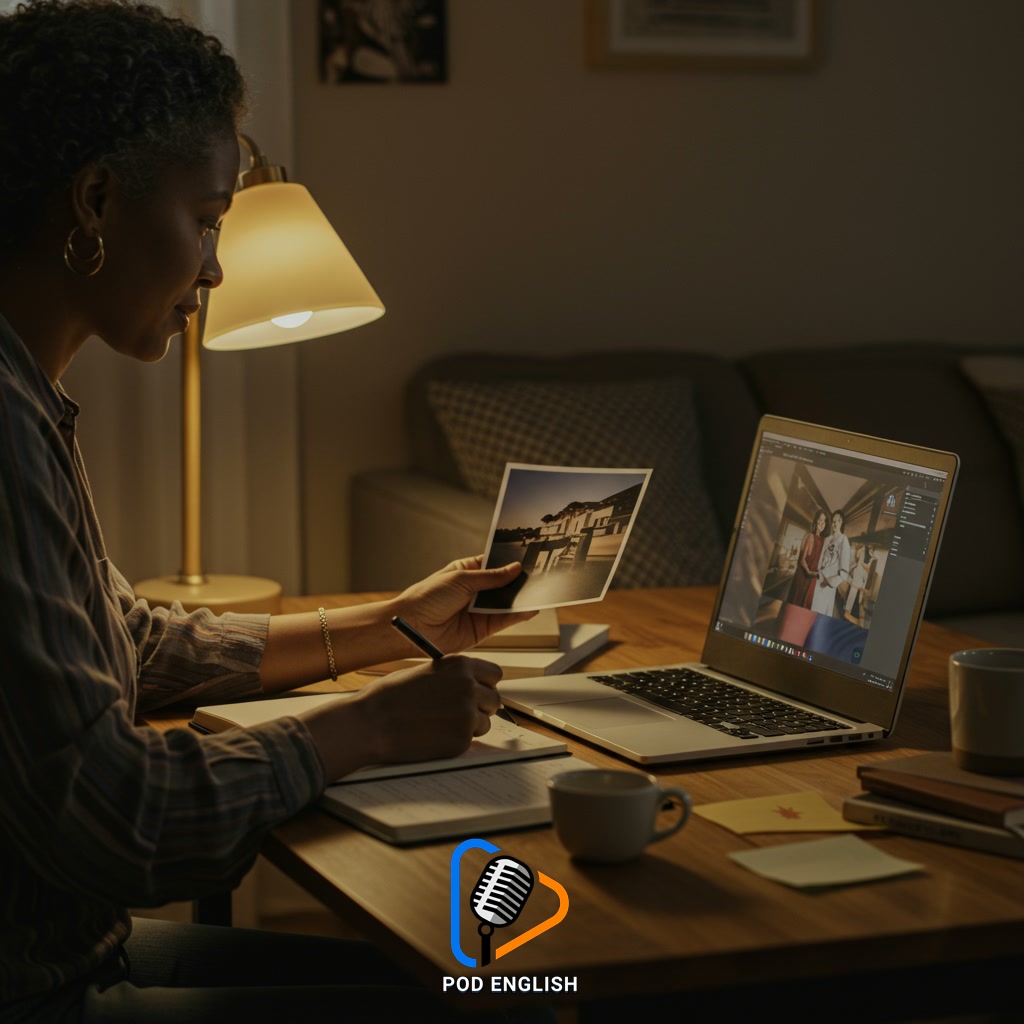Learn English
Improve Your English Vocabulary and Writing Skills with Photography Captions

This approach explores how using photography captions can enhance your English skills. It focuses on expanding vocabulary and refining writing ability through descriptive text for images. This method offers a practical way to learn English by connecting visual input with linguistic output. By crafting engaging captions, individuals can effectively practice and improve their command of the language.
Table of Contents
- Section 1: Introduction: The Visual Connection to Learning English
- Section 2: Expanding Vocabulary with Photo Captions
- Section 3: Improving Writing Skills Through Captioning
- Section 4: Practical Steps to Get Started
- Section 5: Tips for Maximizing Your Learning Experience
- Section 6: Conclusion: Integrating Photography into Your English Learning Journey
Section 1: Introduction: The Visual Connection to Learning English
Learning a new language like English can sometimes feel like a complex task, but connecting it to activities you enjoy or things you naturally do can make the process much more engaging and effective. We often use our eyes to understand the world around us, and this visual connection can be a powerful bridge to language learning. Think about how you react when you see an interesting photograph. It evokes feelings, observations, and a desire to describe what you see or imagine. This natural response to visual input is the foundation for using photography as a tool to improve your English. By focusing on describing images, you actively practice recalling and using vocabulary and structuring sentences, directly enhancing both your word knowledge and your writing skills in a practical, intuitive way.

Introduction: The Visual Connection to Learning English
Section 2: Expanding Vocabulary with Photo Captions
Building on the idea of making language learning engaging, using photography captions is a highly effective method for expanding your English vocabulary. When you look at a photograph, you naturally want to describe what you see, the emotions it evokes, or the story it tells. This desire creates a perfect opportunity to actively seek out and use new words. You’ll find yourself needing specific adjectives to capture the mood, precise verbs to describe actions, and varied nouns for objects or scenes. The process involves identifying gaps in your current vocabulary, looking up appropriate terms, and then immediately applying them in the context of the caption. This active engagement with new words, tied directly to a visual stimulus, helps solidify them in your memory much more effectively than simply memorizing lists.

Expanding Vocabulary with Photo Captions
Section 3: Improving Writing Skills Through Captioning
Building on the idea of expanding your vocabulary through photography, the act of writing captions directly enhances your English writing skills. When you describe a photograph, you move beyond single words and must construct full sentences and paragraphs. This process requires you to think about sentence structure, verb tenses, prepositions, and conjunctions to create coherent and descriptive text. You learn to select the most effective adjectives and adverbs to convey the mood, details, and story within the image. Whether you are writing a simple descriptive caption or a more narrative one, you are actively practicing grammar and syntax, improving your ability to express complex ideas clearly and concisely in English. This practical application makes learning grammar rules feel less abstract and more relevant to real-world communication.

Improving Writing Skills Through Captioning
Section 4: Practical Steps to Get Started
Getting started with using photography captions to improve your English is simple and effective. Begin by choosing a photograph you like, either one you took yourself or one found online. Look closely at the image and think about what you see. Start with basic observations: identify the main objects, people, or animals in the picture. Then, describe the actions taking place. As you become more comfortable, add details using adjectives to describe qualities (colors, sizes, textures) and adverbs to describe how actions are performed. Think about the setting, time of day, and the overall mood or feeling the photo evokes. Write down your descriptions, forming sentences and paragraphs. Don’t worry about perfection initially; focus on expressing your ideas. Review your captions, perhaps using a dictionary or grammar checker, and try rewriting them to improve clarity and vocabulary. Consistent practice with different types of photos will help you expand your descriptive language and refine your sentence structure, significantly boosting your English writing skills.

Practical Steps to Get Started
Section 5: Tips for Maximizing Your Learning Experience
To truly maximize your English learning experience with photography captions, go beyond simple descriptions. Challenge yourself to use new vocabulary words you encounter, perhaps from a dictionary or thesaurus, specifically chosen to fit the mood or details of the image. Don’t be afraid to write multiple drafts of a single caption, experimenting with different sentence structures and descriptive adjectives or adverbs. Seek feedback on your captions from a native speaker or English tutor if possible; constructive criticism is invaluable for improvement. Also, consider focusing on specific grammar points in different sessions, like using different tenses or practicing complex sentence structures. By actively engaging with the language and seeking ways to refine your descriptions, you transform caption writing from a simple task into a powerful tool for vocabulary expansion and writing skill development.

Tips for Maximizing Your Learning Experience
Section 6: Conclusion: Integrating Photography into Your English Learning Journey
Integrating photography into your English learning offers a unique and effective way to improve. As we’ve explored, moving beyond simple captions allows you to actively apply new vocabulary and practice complex sentence structures. This method transforms passive viewing into active language production. By consistently engaging with images and crafting descriptive or creative captions, you build confidence and fluency, forging a strong connection between visual input and linguistic output in a memorable way. Make photography a regular, enjoyable part of your study plan. It’s not just about taking pictures; it’s about using images as dynamic prompts to unlock your full English potential and make your learning journey more vibrant.














